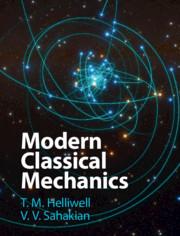The geodesic problem in the Schwarzschild geometry is to make stationary the functional (S=int I d tau),
Question:
The geodesic problem in the Schwarzschild geometry is to make stationary the functional \(S=\int I d \tau\), where
\[I=\sqrt{(1-2 \mathcal{M} / r) c^{2} \dot{t}^{2}-(1-2 \mathcal{M} / r)^{-1} \dot{r}^{2}-r^{2} \dot{\varphi}^{2}}\]
where \(\dot{t}=d t / d \tau\), etc. Use this integrand in the Euler-Lagrange equations to show that one obtains exactly the same differential equations of motion in the end if the square root is removed; i.e., if we instead make stationary the functional \(S^{\prime}=\int I^{2} d \tau\). You may use the fact that \((1-2 \mathcal{M} / r) c^{2} \dot{t}^{2}-(1-2 \mathcal{M} / r)^{-1} \dot{r}^{2}-r^{2} d \dot{\varphi}^{2}=c^{2}\), a constant along the particle path. The result is important because it is often much easier to use \(I^{2}\) in the integrand rather than \(I\).
Step by Step Answer:






